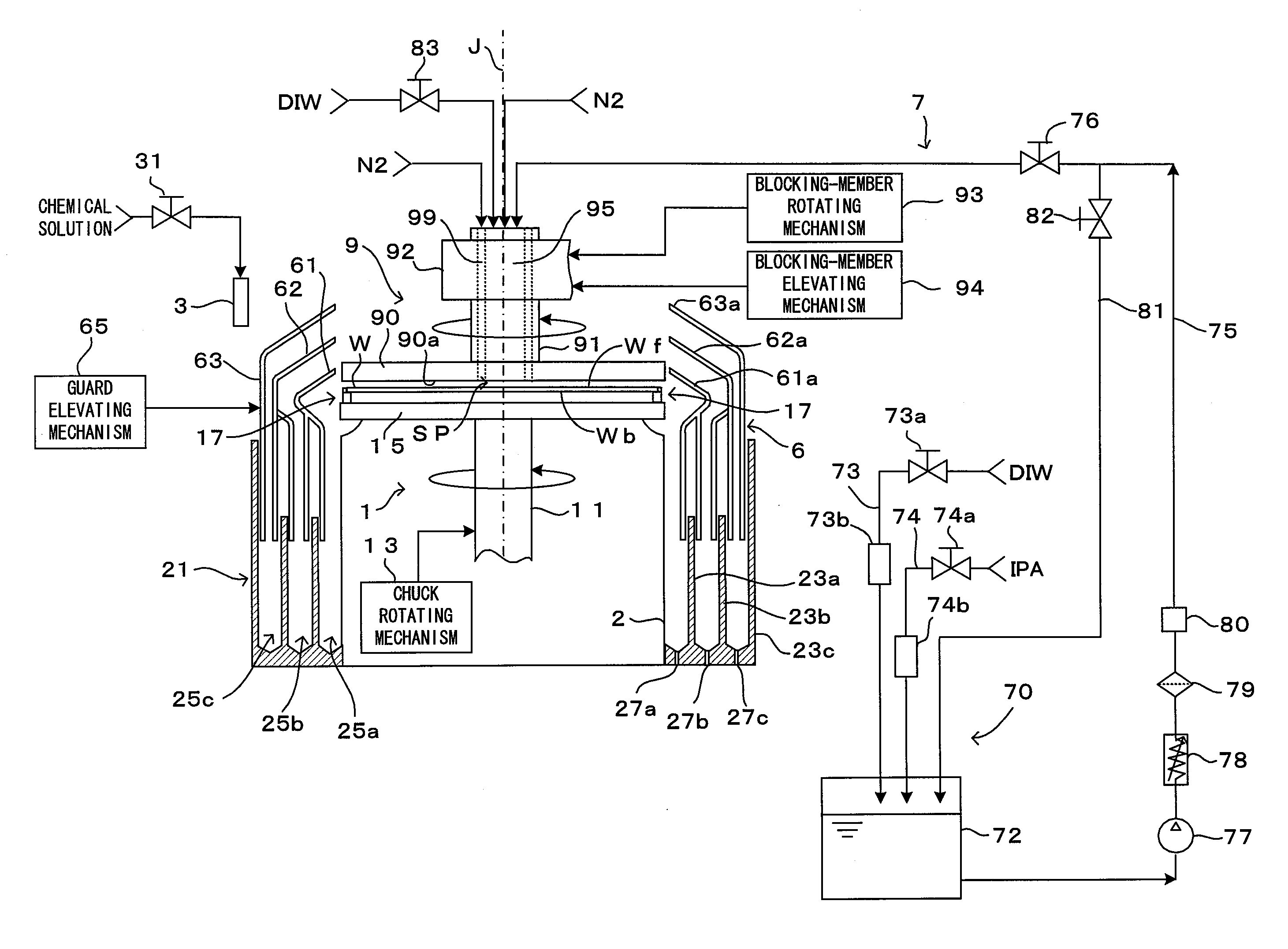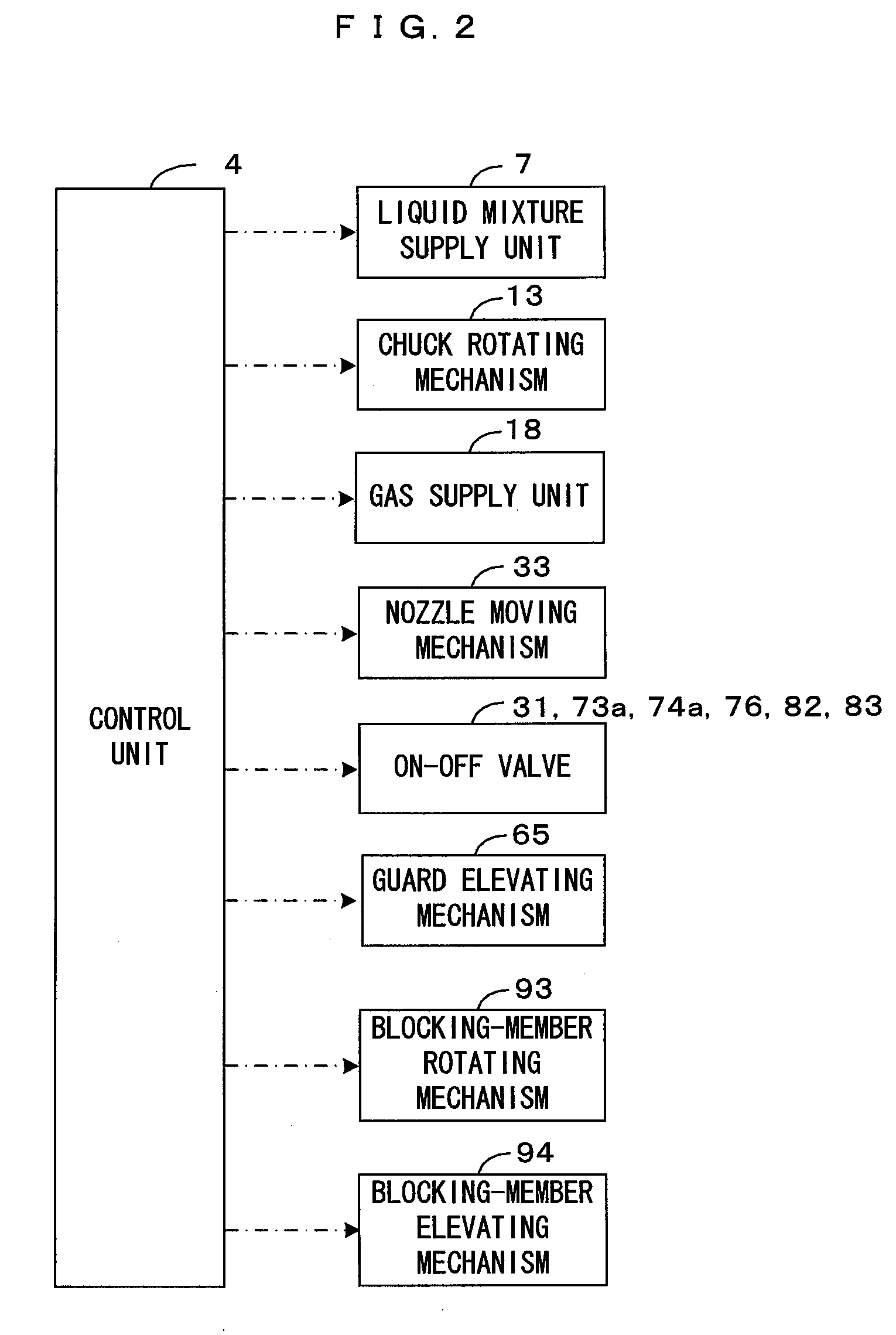Substrate processing apparatus and substrate processing method
a substrate processing and substrate technology, applied in the direction of cleaning processes and apparatus, chemistry apparatus and processes, cleaning using liquids, etc., can solve the problems slow progress of low surface-tension solvents, so as to achieve the effect of increasing the running cost, short time, and relatively large low-surface-tension solvents
- Summary
- Abstract
- Description
- Claims
- Application Information
AI Technical Summary
Benefits of technology
Problems solved by technology
Method used
Image
Examples
Embodiment Construction
[0025]FIG. 1 is a diagram showing an embodiment of a substrate processing apparatus according to this invention, and FIG. 2 is a block diagram showing a main control construction of the substrate processing apparatus of FIG. 1. This substrate processing apparatus is a substrate processing apparatus of a single wafer type used for cleaning processing to remove undesired substance adhering to a surface Wf of a substrate W such as a semiconductor wafer. More specifically, this apparatus dries the substrate surface Wf wet with a rinsing liquid after applying chemical processing using a chemical solution such as a hydrofluoric acid and rinsing processing using the rinsing liquid such as pure water or DIW (deionized water) to the substrate surface Wf. In this embodiment, the substrate surface Wf means a pattern-formed surface on which a device pattern made of poly-Si or the like is formed.
[0026]This substrate processing apparatus includes a spin chuck 1, a chemical solution discharging no...
PUM
| Property | Measurement | Unit |
|---|---|---|
| Speed | aaaaa | aaaaa |
| Tension | aaaaa | aaaaa |
Abstract
Description
Claims
Application Information
 Login to View More
Login to View More - R&D
- Intellectual Property
- Life Sciences
- Materials
- Tech Scout
- Unparalleled Data Quality
- Higher Quality Content
- 60% Fewer Hallucinations
Browse by: Latest US Patents, China's latest patents, Technical Efficacy Thesaurus, Application Domain, Technology Topic, Popular Technical Reports.
© 2025 PatSnap. All rights reserved.Legal|Privacy policy|Modern Slavery Act Transparency Statement|Sitemap|About US| Contact US: help@patsnap.com



